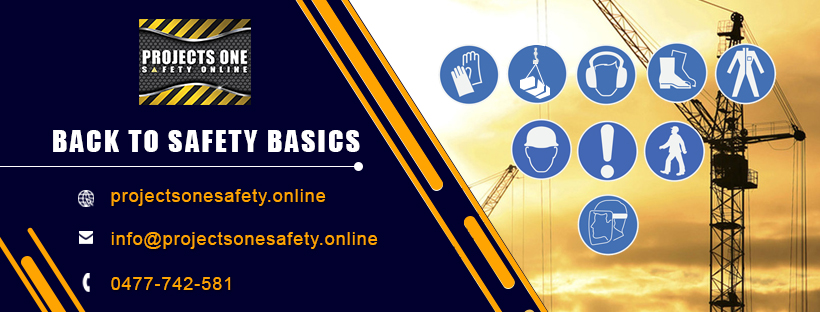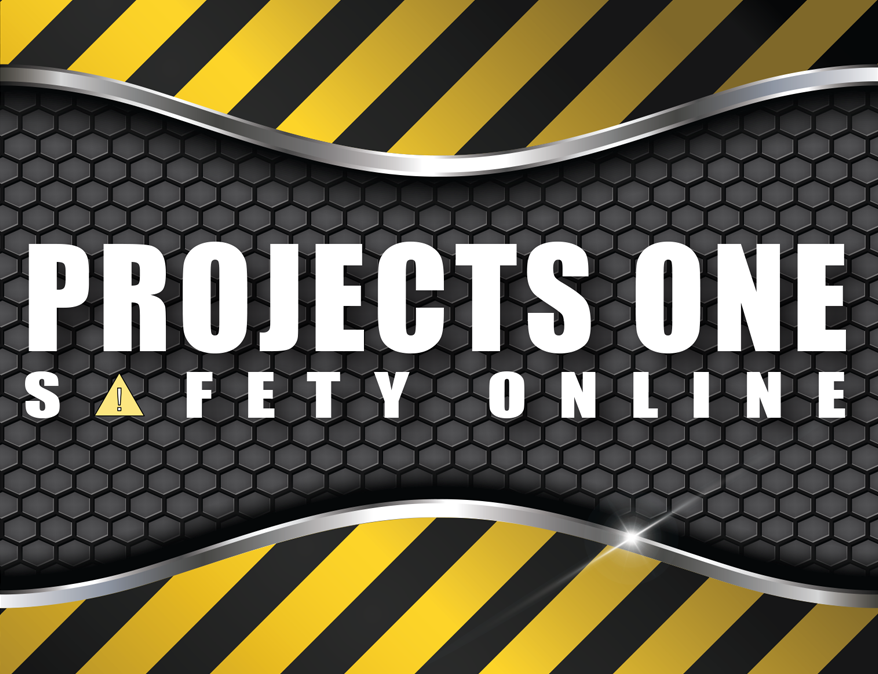
Back to Safety Basics
Safety for the construction industry
When starting a business in the construction industry you normally consider how you will find clients and do the bookkeeping, then things get serious and someone asks you for your Safe Work Method Statement (SWMS) or you attend a Workplace Health and Safety (WHS) meeting to get started and it all seems overwhelming. WHS talk about Management Commitment, Consultation, Safe Work Procedures, Training and Supervision….
We recently spoke to a tradie who had been given a couple of improvement notices from WHS, he had no idea where to start. Putting together the documents WHS needed was going to take him weeks and he simply didn’t have weeks, nor did he have the administration skills needed, so we helped him out with a WHS policy template, training register template and then got him and his staff using Projects One Safety Online to do their Toolbox Meetings, Risk Assessments and Safe Work Method Statements (SWMS) onsite. It now takes his team around 10 minutes each morning to do their safety on their phones, onsite where safety should be done.
Below my lovely Wife dissects our safety system to make it easy for you to build your own. Feel free to give Projects One Safety Online a call for some extra help.
10 points when starting your Safety System – Understanding the basics
Written by, a Tradies Wife, creator of Projects One Safety Online, the ‘simplifier’ of all thing’s safety
(I have used Worksafe Queensland as an example below as it is what I am most familiar with, each state follows similar rules and guidelines. Please check your own states website for further information. This is not a complete list and care should be taken to ensure you cover all aspects of your Safety)
1. Management Commitment
Responsibility for safety starts at the top. Managers should demonstrate their commitment to safety and ensure that everyone in the business is clear about their health and safety responsibilities
https://www.worksafe.qld.gov.au/injury-prevention-safety/small-business/compliance-at-a-glance-serious-about-safe-business/management-commitment
- Familiarise yourself with the business’ obligations under WHS laws
- Write a WHS policy and staff induction
- Sit down with your staff and talk about safety and how it is priority and how you are committed to safety. Talk about responsibilities of management and staff to help keep every team member safe
- Talk about how to report incidents and safety concerns
- Let your team know how you will support them and provide effective tools such as supervision, training, well maintained tools and equipment
- It’s important that your team feel valued and that their safety matters to you. Encourage and value input from your team. After all its their safety you are discussing
- Lead by example, be positive when talking about safety, don’t call safety processes “ares covering” or “a waste of time” and certainly don’t say “we don’t get paid for this…..”
- Teach your team to think about safety in a positive way. We use Toolbox Meetings daily to ask the question “what is different about today” that then leads us to what changes we need to make to our safety
2. Consultation
Your workers are directly affected by your decisions and can often see things that you may overlook. Consultation enables you to share information and take workers’ views and suggestions into account.
https://www.worksafe.qld.gov.au/injury-prevention-safety/small-business/compliance-at-a-glance-serious-about-safe-business/consultation
- Encourage workers to be involved
- When planning, seek the views and ideas on how safety issues could be addressed
- Make an extra effort to include young workers, those with a disability and those from a non-English speaking background
- Record your discussions (if its not written down it didn’t happen). Create a Toolbox Meeting record sheet or use the one provided on Projects One Safety Online
3. Safe Work Procedures
Some work tasks carry risks. Good risk management, including safe work procedures, ensure risk at your work is minimised and workers know how to perform tasks safely.
https://www.worksafe.qld.gov.au/injury-prevention-safety/small-business/compliance-at-a-glance-serious-about-safe-business/safe-work-procedures
- Use the above link it has lots of great information on where to start
- Logon to your new Projects One Safety Online account and use our safe operating procedures for your power tools
4. Training and Supervision
Training will ensure that your workers know about issues that will affect their health and safety. It will provide your workers with information about potential risks associated with their work, the safety policies and procedures you have in place, how to work safely, and how to deal with emergencies.
Supervision will provide a direct link from the employer to worker, will help ensure your policies and procedures are being followed, and will allow non-compliance to be addressed and rectified. Good supervisors are essential for improving productivity and maintaining safe practices.
https://www.worksafe.qld.gov.au/__data/assets/pdf_file/0020/83207/advice-sheet-4-training-and-supervision.pdf
- Put together a training register to keep track of who is trained in what and when that qualification requires updating or retaining is required
- Put a reminder in your calendar of all expiry dates, you need to follow up
- Keep copies of all qualifications and training for all your staff
- Ensure you have adequate supervision in place, this is one of the questions we have in our Toolbox Meeting in Projects One Safety Online and is addressed every day with our own team
5. Reporting Safety
A simple reporting procedure will help you to obtain important information about health and safety issues in the workplace, identify problems when they arise, and address them.
https://www.worksafe.qld.gov.au/injury-prevention-safety/small-business/compliance-at-a-glance-serious-about-safe-business/reporting-safety
- Create an easy non-judgmental and supportive approach to reporting incidents and near misses
- Investigate every incident and near miss. How can you improve your safety, so this incident does not happen again?
- Encourage near misses to be reported, next time it might not me a miss
6. Workers’ compensation and return to work
If you employ workers, you must have a current workers’ compensation insurance policy, an injury reporting system and an effective rehabilitation and return to work program.
https://www.worksafe.qld.gov.au/injury-prevention-safety/small-business/compliance-at-a-glance-serious-about-safe-business/workers-compensation-and-return-to-work
7. Action Plan
Develop a plan to address identified health and safety issues.
https://www.worksafe.qld.gov.au/injury-prevention-safety/small-business/compliance-at-a-glance-serious-about-safe-business/action-plan
The information you should include is the:
- Issue
- action required
- people involved
- planned completion date
8. Get started with Projects One Safety Online
Get started with Projects One Safety Online to take care of your daily safety paperwork needs. Save time, complete your Risk Assessments, SWMS, and Toolbox meetings online on your phone onsite
9. Track of your projects with Projects One Safety Online
Projects One Safety Online keeps track of your projects, gives your staff the information they need for that task, allows your staff to add notes and keep a complete file for all members of the project to see
10. Manage all Documents with Projects One Safety Online
Projects One Safety Online is a place to keep all your policies, procedures, photos, notes, timesheets, Safety Data Sheets….
Remember, every morning as you prepare for work ask yourself, what’s different about today? If something is different you need to revise your safety!
Stay safe, from the Projects One Safety Online team





